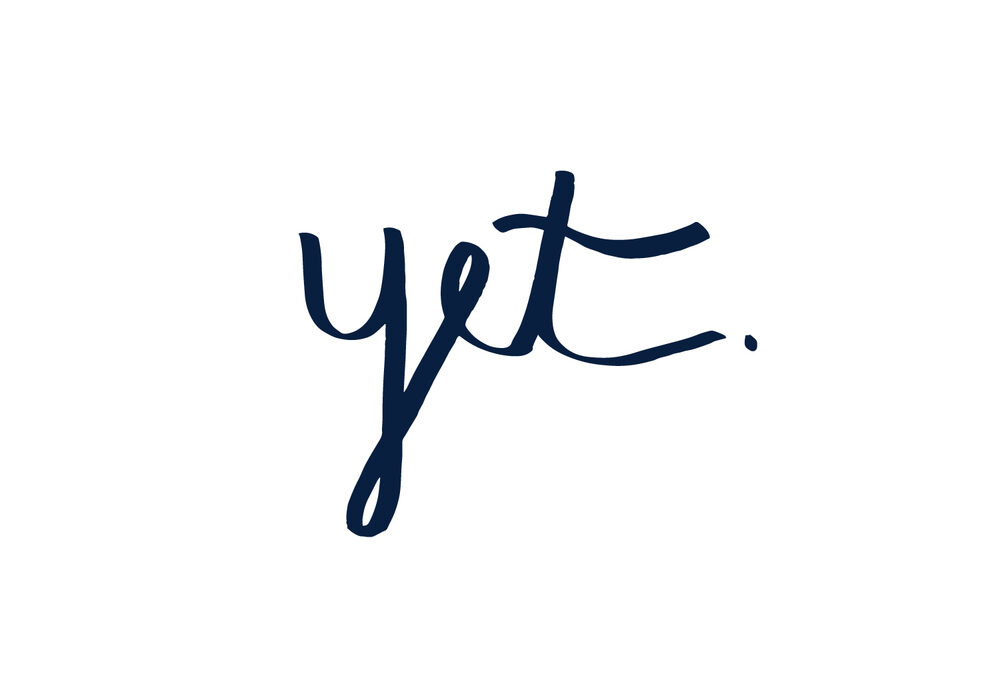
by Robyn Bolton | Oct 26, 2021 | Innovation, Leadership, Strategy
A few weeks ago, I wrote that innovation happens in the gaps and offered a few suggestions for finding and closing those gaps.
But I only told you half of the story.
The gaps I wrote about are market gaps, the ones between what your customers want or need and what you offer.
These gaps are relatively easy to close because they exist through no fault of our own and we have tools like customer research and R&D to help close them. Closing these gaps is simply what we are in business to do.
But there are other gaps. Gaps that are harder close, mainly because no one wants to see them. These are the gaps inside your organization – the ones that exist between what you need, want and are willing to do.
These gaps exist because status quo is more comfortable and certain, and executives have little to no incentive to close them. These are the gaps that create room for disruption and take down once-great companies.
Mind the INTERNAL Gaps
Need: What you must do to stay in business. Need To Dos aren’t glamorous, doing them won’t give you a competitive edge or make you immune to disruption. But, if you don’t do them, you’ll go out of business much faster than if you do.
Want: What you aspire to do. Want To Dos are what you wish your company would do, achieve, or be known for. These are the things you declare at company meetings, the BHAGs, and the visions. They are what inspire and motivate employees. They are also things that rarely happen because…
Willing: What you do in addition to the Need To Dos. If “want” is the talk, “willing” is the walk. Doing the Wants drives your resources allocation and investment decisions, drives the goals and KPIs you measure, and determines the expectations you set with shareholders. Willing is what you commit to and base your compensation, and maybe even job, on
Close the Gaps
Need / Want: The Comfortable Gap
Closing this gap is comfortable because you know how to do it. You know that just doing the basics isn’t enough to survive in a competitive world and you have experience investing in improvements that are almost certain to increase revenues and/or decrease costs in the near-term.
If you have a gap between what you need to do and what you want to do, understand why the gaps exist and invest in closing them.
Need / Willing: The Deadly Gap
Avoiding this gap is what drives most executives and entrepreneurs because this is where companies die. Startups face this gap when they need more capital but investors aren’t willing to provide it or when they need to pivot but are unwilling to let go of their idea.
Giant, successful companies face this when consumer expectations change, technology leaps forward, and the basis of competition shifts. They see it happening, but they are unwilling to change. They cling to their business models, relentlessly focusing on better serving their best customers until they are, ultimately, disrupted.
If you face a Need/Willing gap, you need to decide whether you will let go of the safety of the current business to invest in disrupting it or whether you will “get while the getting’s good” and milk as much revenue and profit out of the business before it finally succumbs. Both options are valid but making a choice requires great courage. Unfortunately, most executives are too afraid to make that choice and their companies become victims of indecision.
Want / Willing: The Heart-breaking Gap
Seeing this gap is hard because it exists as a direct result of decisions made by the very leaders who seek to close it. How many times have you heard an executive declare “We need to be more innovative!” and then embark on a year-long cost-cutting initiative? Or ask people to come up with ideas in their free time? Or shift resources from innovation to core business operations?
If seeing the gap is hard, closing it is infinitely harder. Closing it requires change, it requires executives and employees to do things differently, often doing the opposite of what they’ve always done. It requires smart risk taking and the willingness to learn. It requires prioritizing the next decade over the next quarter.
If you face a Want/Willing gap, you need to look in the mirror and honestly answer two hard questions – Why do you want to be more innovative? What are you, personally, willing to sacrifice to be more innovative?
If your only answer to the first question is, “I think we should be,” or your answer to the second is “nothing,” STOP. The gap is too big to close because you don’t have the will to do what needs to be done to drive change.
But if you have clear and meaningful answers to the first question and you’re willing to make personal sacrifices if required, then you’re ready to do the challenging, frustratingly slow, but profoundly rewarding work necessary to close the gap.
Mind the Gap or Close the Gap?
There are gaps that we comfortably live with, gaps that will destroy us, and gaps that will break our hearts. All gaps can be closed, but each requires different levels of commitment, courage, and time.
Are you willing to close the gap?

by Robyn Bolton | Aug 28, 2021 | Innovation, Leadership
I do. We do. You do.
My Mom taught pre-school. It wasn’t a job; it was her calling. Kids gravitated to her like she was the Pied Piper, and she greeted them with unequaled patience, acceptance, and love. Years later, her students would talk about how she changed their lives when they were only four years old. And she did it by following one simple rule.
I do. We do. You do.
Whatever she was teaching, whether it was sitting still at a table and eating a snack or writing the alphabet, she always did it first so the kids would know that it’s possible and not be afraid to try.
Then, they would do the activity together. Side-by-side, they would eat a snack or draw letters, the kids occasionally glancing to the side to mimic her and my Mom gently coaching and encouraging.
Finally, she would step back, never disappearing completely, always within sight, but no longer right there. By doing this, she created the space for them to be independent and to build confidence.
It is easy to say that she was teaching.
It is more accurate to say that she was leading.
It is precisely what executives need to do if they want to build a culture and capability of innovation within their teams and businesses.
I do.
It is not enough to encourage your team to take risks. YOU need to take risks. Ask a question in a meeting. Say, “I don’t know.” Challenge the status quo. Be the first to do something different or uncertain, so your people know that it’s possible and aren’t afraid to try.
We do.
Don’t sit back in judgment, demanding that your teams present their work to you, and bombarding them with questions that begin with, “Did you think about…?” or demands for data that couldn’t possibly exist.
Instead, coach them and encourage them. Sit next to them as they share the work they’ve done and ask questions to learn more. Work with them as they think through options and examine alternatives.
You do.
It’s tempting to want to stay in the work and continue exploring and creating, but you eventually need to step back and let the team work. Give them the time and space to make progress without constant updates. Give them the resources to do bigger and better things. Give them more independence so they can build their confidence and a track record of success.
But don’t disappear. Be close enough that when the team needs you, you’re just a shout away. Most importantly, actively advocate for and defend the team when the cultural antibodies hell-bent on defending the status quo arrive and begin their attack.
I do We do You do is what leadership looks like.
Whether you’re learning the alphabet or innovating within a big company.

by Robyn Bolton | Apr 27, 2021 | Leadership
Some conversations stick with you for a long time.
Some conversations take your breath away the moment they happen.
A few weeks ago, I had one that did both.
“Everyone is focused on ‘humanizing’ work,” my client said. “I wish people would de-humanize work. I would love nothing more than to be treated like a line of code or a piece of equipment. We treat our code and equipment better than we treat our people.
When a piece of equipment doesn’t work, we send in teams of people to fix it. We study what went wrong, we fix the error, and we take action to make sure it doesn’t happen again. We don’t expect a line of code to work in every operating system, to be able to do everything in every context. We know that we need to adapt it for iOS or Android.”
As I picked my jaw up off the floor and put my eyes back in my skull, she continued.
“But people…when a person is struggling, we don’t send anyone to help. We don’t ask why they’re struggling or study the situation or take action so that no one else experiences the same problem. We expect the person to either fix their own problem or to leave.
We expect everyone to be able to work in every situation and when there’s a mismatch, we expect the more junior person to ‘expand their toolkit’ and ‘learn to work with other styles’ or to leave.
“If we treated our people the way we treat our products, our people would be so much happier, and we’d be so much more successful as a company.
Talk about a truth bomb.
And it’s not just her company. It’s almost every company I’ve worked for or with.
Think about it. What happens when a project is going off the rails? Or a product is malfunctioning? Or a shipment is delayed or missed? The team, maybe even the full company, shifts its focus to solving the problem. People, time, money, all of it funnels to fixing the problem and getting things back on track.
But what about when a person or a team is struggling? Or about to burn out? Or devolving into dysfunction? They become the problem and people start to back away. They’re given self-guided training. They’re reminded of their job responsibilities and expectations. They’re put in a new role and made someone else’s “problem.” They’re let go from the company.
When a product isn’t meeting expectations, we rush to help.
When a person isn’t meeting expectations, we back away.
Maybe we do need to start treating our people like our products.
Maybe de-humanizing work is the key to making it work for humans.

by Robyn Bolton | Mar 24, 2021 | Innovation, Leadership
We all love Innovation but there are times when it isn’t the answer. In fact, there are times when it is the absolute last thing a business should do.
Do NOT innovate if:
- Your current business is declining
- You need immediate results
- You want to play it safe and follow rather than lead
- You’re afraid of losing customers
- You’re afraid of falling behind the competition
- You’re getting pressure from shareholders
- You want to hang out with famous CEOs/be on TV and the cover of magazines
- You read an article/book/had a conversation and it doesn’t seem that hard
- You want to do something fun/different/exciting/noteworthy
- You can
Luckily, there is a corresponding list of times when Innovation is the answer.
DO innovate when:
- Your current business is solid
- You need a pipeline to deliver new revenue now AND in 3, 5, 10 years
- You are willing to take smart risks so you can lead instead of follow
- You want to better serve your customers
- You are confident in the business fundamentals and its future potential
- You believe in investing and building for the long-term
- You care about the long-term health of the business and your people
- You are committed to learning and building an organizational capability
- You are willing to work hard for a long time to do the impossible
- You will
Did you notice some themes in those two lists?
In the first list, you’re reacting. The beliefs, biases, and prejudices of your unconscious mind are controlling and driving you. An event occurred in your environment and now you’re afraid of losing something – great business results, competitive advantage, stakeholder support, your reputation. You’re afraid of losing something so you’re looking for something to save you and innovation is a bright shiny object that everyone loves, and no one will fault you for pursuing it.
In the second list, you’re responding. Your conscious and unconscious minds are working together to take in information, considering the well-being of those around you, and factoring in your beliefs and values. An event occurred in your environment that presents new information. Instinctively you perceive it as a threat but then reframe it as an opportunity to create, change, or improve the status quo. As a sign of your commitment and belief in the possibilities and potential, you use innovation as a tool to drive long-lasting impact.
The next time you consider starting an innovation project, hosting an innovation event, or staffing up an innovation team, pause to consider why you’re doing it. Is the answer on the first list or the second?
After all, just because you can, doesn’t mean you should.

by Robyn Bolton | Mar 2, 2021 | Innovation, Leadership, Stories & Examples
The Horsemen are drawing nearer
On leather steeds they ride
They’ve come to take your life
On through the dead of night
With The Four Horsemen ride
Or choose your fate and die
– “The Four Horsemen” by Metallica
No scene from The Bible’s description of the Apocalypse has captured the popular imagination as much as that of the Four Horsemen. In Revelation 6, four beings are summoned, each riding out on a different colored horse – Conquest on a white horse, followed by War on a red horse, Famine on a black horse, and, finally, Death on a pale horse.
“The Four Horsemen” has been used as an analogy to describe everyone from Notre Dame football players to Supreme Court Justices, and referenced in books for everything from dealing with addiction to relationship counseling.
There are also Four Horsemen that foretell the end of innovation in a company
The White Horse: Short Term-ism
Like Conquest, Short Term-ism wears a crown and is hailed as a bringer of victory, prosperity, and health. After all, the only thing better than hitting your quarterly numbers is hitting them two quarters in a row. Then three, then four…
Short term-ism convinces you that the good times are here to stay if you just keep investing in today. Anxious to continue reaping immediate rewards and blind to the fact that it will end someday, executives dedicate more and more financial resources to short-term initiatives, reducing and ultimately killing long term investments
The Red Horse: Size
Size matters. Rulers fight wars to expand their empires. Executives spend, acquire, and merge to expand theirs.
The result is that an idea, business, or investment that was attractive 5 years ago needs to be 10x the size and 100x the certainty today. As companies get bigger the size of new products, business models, and revenue streams need to get bigger to move the needle.
I spoke to a CEO recently who lamented that he regularly shuts down ideas for new products because they’re “not big enough.” The irony, he told me, is that the new product that’s not big enough for today’s business would have doubled the size of the business 7 years ago.
But innovation often starts small, with a single spark, and needs to be incubated and nurtured over (a reasonable amount of) time. Companies that will only invest in big innovations that produce immediate results, don’t invest in innovation.
The Black Horse: Scarcity
When there’s not enough to go around, you have a famine. It can be food and water, or money and time. It can be real or perceived. It is always deadly.
We live and work in environments of scarce resources. Even the biggest companies don’t have infinite amounts of time, money, and people. That means that $1 spent on innovation (something new that creates value) is $1 NOT spent on the certainty of today’s business.
Trade-offs are a part of life. The problem is when trade-offs stop being seen as choices we make to achieve the best possible outcome, and start to become us-versus-them battles.
The result is corporate cage matches in which a small band of innovators must battle powerful business unit owners and influential functional heads for scarce resources. Spoiler alert, innovators rarely emerge victoriously.
The Pale Horse: Fear
Corporate innovators can survive short-term-ism, size requirements, and scarcity. They can’t survive fear.
Rarely is it their own fear – of failure, humiliation, or unemployment – that stops them. It is the fear that senior executives have of poor results, losing customers, no bonuses, and, yes, failure, humiliation, and unemployment.
Like Revelation’s depiction of Death as empty-handed and followed by Hades, its jaws open to receive Death’s victims, Innovation’s apocalyptic Pale Horse rider neither shows nor speaks of its fear and is usually followed by HR*, its arms open to welcome innovators into new roles in the core business.
Averting the Apocalypse
Unlike the Biblical Apocalypse, the Innovation Apocalypse can be stopped and even prevented.
To prevent the Innovation Apocalypse, embody the opposite mindsets and behaviors of the Four Horseman:
- Invest in the long-term and patiently wait for results
- Invest in things that start small but have the potential to grow
- Remember that growth isn’t about slicing up the same pie differently, it’s about making the entire pie bigger
- Confront fear and minimize real risk through experiments, pilots, and other small-scale tests
Of course, all of this is easier said than done.
The reality is that the Four Horsemen are already running rampant in most organizations. The only way to stop them from ushering in the Apocalypse is to confront them.
This takes guts.
It’s not easy or risk-free to challenge, however politely, a senior executives’ decisions that prioritize the short-term over the long-term, big business over small, preservation of resources over investment, and certainty over the unknown.
You may need to set-up a one-on-one conversation. You may need to pull someone in as an ally or messenger. You may need to talk to someone with the hopes that they can talk to the decision-maker.
But if you don’t speak up, the Horsemen will ride roughshod over your business and the Innovation Apocalypse will come.
* To be very clear, I am NOT equating HR to Hades. I love HR. They have a very important and very difficult job, and they are woefully under-appreciated. They also have the misfortune of being the people who show up immediately after an innovation initiate gets shut down with the task of picking up, reallocating, or separating the people left behind. Which, unfortunately, makes them a great element for this analogy.

by Robyn Bolton | Feb 15, 2021 | Innovation, Leadership, Tips, Tricks, & Tools
Have you heard any of these sentences recently?
“We don’t have time”
“Our people don’t have the skills”
“We don’t have the budget”
“That’s not what we do”
I hear them all the time.
Sometimes they’re said when a company is starting to invest in building their innovation capabilities, sometimes during one-on-one stakeholder interviews when people feel freer to share their honest opinions, and sometimes well after investments are made.
Every single time, they are the beginning of the end for innovation.
But one word that can change that.
“We don’t have time – yet.”
“Our people don’t have the skills – yet.”
“We don’t have the budget – yet.”
“That’s not what we do – yet.”
Yet.
Yet creates space for change. It acknowledges that you’re in the middle of a journey, not the end. It encourages conversation.
“We don’t have time – yet.”
“OK, I know the team is busy and that what they’re working on is important. Let’s look at what people are working on and see if there are things we can delay or stop to create room for this.”
“Our people don’t have the skills – yet.”
“Understand, we’re all building new skills when it comes to innovation. Good news, skills can be learned. Let’s discuss what we need to teach people and the best way to do that.”
“We don’t have the budget – yet.”
“I get it. Things are tight. We know this is a priority so let’s look at the budget and see if there’s a way to free up some cash. If there’s not, then we’ll go back to leadership and ask for guidance.”
“That’s not what we do – yet.”
“I know. Remember, we’re not doing this on a whim, we’re doing this because (fill in reason), and we have a right to do it because of (fill in past success, current strength, or competitive advantage.”
You need to introduce the Yet.
It is very rare for people to add “yet” to their statements. But you can.
When someone utters an innovation-killing statement, respond with “Yet.” Maybe smile mischievously and then repeat their statement with “yet” added to the end.
After all, you’re not disagreeing with them. You’re simply qualifying what they’re saying. Their statement is true now, but that doesn’t mean it will be true forever. By restating their assertion and adding “yet,” you’re inviting them to be part of the change, to take an active role in creating the new future state.
There’s a tremendous amount of research about the massive impact of this little word. It helps underperforming students overachieve and is closely associated with Dr. Carol Dweck’s research into fixed and learning mindsets.
The bottom line is that “yet” works.
Put Yet to work for you, your organization, and your efforts to innovate and grow.





